
South Australian Medical Heritage Society Inc
Website for the Virtual Museum
Home
Coming meetings
Past meetings
About the Society
Main Galleries
Medicine
Surgery
Anaesthesia
X-rays
Hospitals,other organisations
Individuals of note
Small Galleries
Ethnic medicine
- Aboriginal
- Chinese
- Mediterran
A history of syringes
The Collins English Dictionary defines a syringe as “An instrument such as a hypodermic syringe, or a rubber ball with a slender nozzle for use in drawing or injecting fluids, cleansing wounds etc.”
The OED Has two listings and cites the first English literature reference in 1425 AD. It refers to John of Ardene’s treatment of fistulas. Later, Copeland (1541), quotes Galen and refers to a brass syringe.
In Roman times nasal syringes were fairly common and had an outer metal case with a tow or flax plunger. In the 17th century English syringes were made from pewter or silver. The barrel and head were up to 20cm long, suggesting rectal or vaginal use.
John Moyle (1693) used wine in an ear syringe, and Dominique Anel developed a suction syringe used for infected wounds. Larger syringes were used for irrigation. Almost all structures including the lachrymal duct were cannulated. In the mid 19th century a small syringe was developed. It had a screw arrangement, which permitted the release of a single drop. The first syringe patents by John and Frederick Weiss were taken out in 1824 and 1851 respectively. A stomach pump was patented by John Read (1760-1847). Read’s enema syringe was made of brass and had ivory attachments.
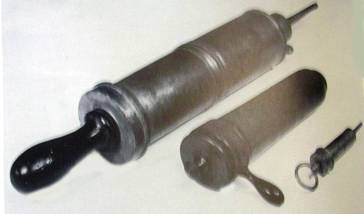
Novels of the 19th Century suggest that the enema was taking a place in the lives of the healthy as well as the ill. There was an ingenious & wide variety of apparatus. Maw’s catalogue of 1868 offered 39 varieties of equipment for colonic irrigation, made of every material, and some were extensively decorated.
The smaller ones were made of brass, pewter, or glass, with a rubber or twine bound plunger. A silk covered rubber tube was supplied with an ivory plug for rectal irrigation or a rubber covered brass tube for the vagina. Larger varieties had an independent reservoir and worked as a brass pump. One introduced in 1830 was sold as “Maw’s Domestic Medical Machine”.
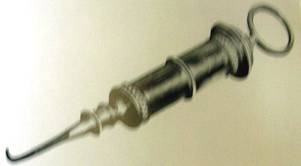
Modern glass & plastic syringes
The “MB” medical instrument company was formed in 1897 when M. W. Becton and F.S. Dickinson met on a sales trip. In October of that year they sold their first “Luer” all glass syringe for $2.50. A year later they were able to obtain a half interest in the patent rights of an already active French manufacturer H. Wulfing Luer.
B.D. was incorporated in 1906 and produced instruments, thermometers, syringes & hypodermic needles. In 1913 after a merger with O.O. Swidetzky they diversified to produce the ASEPTU bulb syringes.
A syringe for diabetics was developed and distributed in 1924. The company grew and diversified becoming active in other countries: Canada (1951), Mexico (1952), France (1955), and Brazil (1956). They were listed as one of the “Fortune 500” companies in 1970. The disposable plastic syringe was introduced in 1961.
In Australia, the major manufacturer of plastic syringes is the “Terumo Group”. Originally a manufacturer of thermometers they were producing fully metallic needles in 1962. Plastic polypropylene syringes and needles with a plastic base were introduced in 1964. Their “once only use” was very timely, preventing the transfer of Hepatitis B and other serious infections.
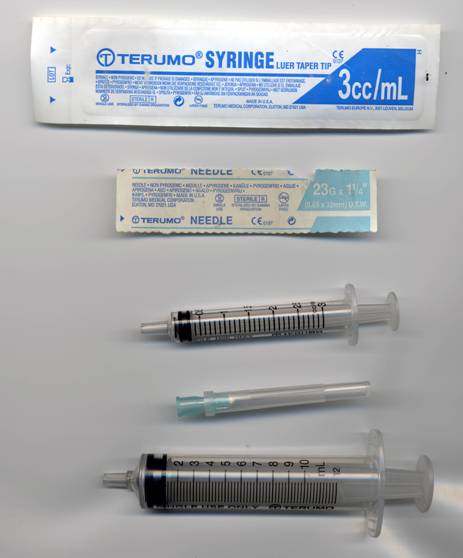
Old special purpose syringes
Illustrated below are two special purpose syringes, the property of the Department of Surgery of the Royal Hospital Adelaide.
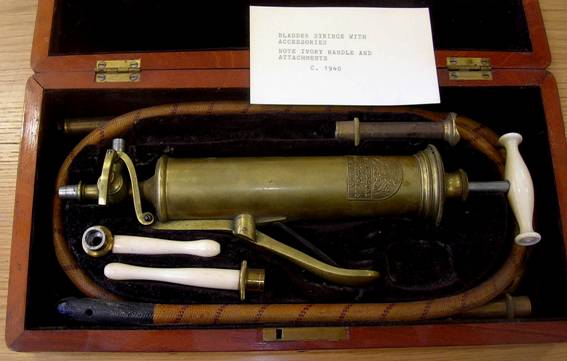
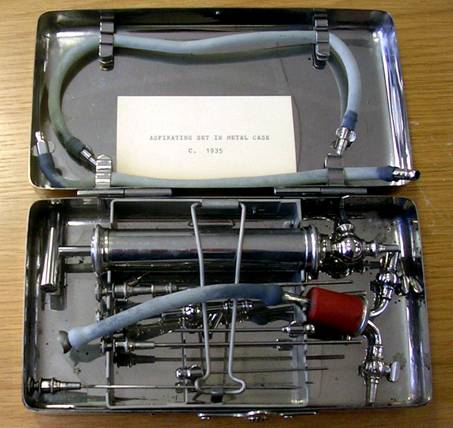
-o0o-